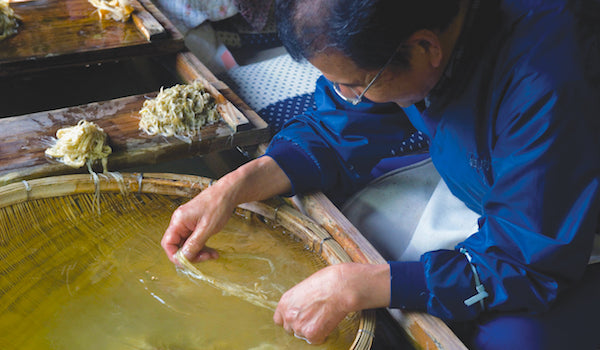
Put To Paper

Washi is the Japanese word for the traditional paper made from the long inner fibres of plants; ‘wa’ meaning Japanese and ‘shi’ meaning paper. Although paper was first made in China during the first century, this craft travelled to Japan by 610 AD, when Buddhist monks made it for writing sutras. By the 9th century, no country could match Japan’s paper-making skills.
Five years ago TedX looked to Japan’s Tohoku region and discovered husband and wife Heiji and Fumie Sato; the owners of the last traditional washi atelier in the Yanagiu region. Together they work with a love and passion for this craft that is now more than 400 years old.

Today, artists and designers still use washi in printing, collage, lighting, bookbinding and painting. Washi is far more absorbent than standard printing paper and features rich textures that make the material resilient enough to withstand these often laborious crafts. Sadly, this heritage art form is in decline throughout, as now there are fewer than 350 families still producing it in Japan.

Perhaps the contemporary craft industry ought to take inspiration from the fashion world these days and take a turn towards slowing down, taking stock, and investing in more quality, meaningful materials, like washi.
To read about Polly Leonard's visit to one of Japan's remaining washi ateliers, order your copy of Selvedge issue 81: Japan Blue, here.
